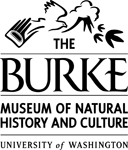First the wood is slowly dried in an underground place, then it is cut. The dishes are turned on a lathe called 'gedde', operated by two men. The lathe consists of two wooden seats, for one man each, which they sit on while they operate two long wooden foot pedals that are transverse to the seats, which lie one behind the other. The pedals are connected by a belt, formerly made of leather but now made from the inner part of a tire, which turns the rotor. [see cat# 1995-4/24].
The owner of the wood, who will make the dish, first hollows out a small hole (3cm wide, one deep) in the middle of the blank using an adze with a concave blade, about 3 cm wide and one deep, called a 'dzo' [see cat# 1995-4/22].
He then inserts the pointed end of the rotor in this hole. The rotor is called 'dzowo' and consists of a 6 or 7 cm thick, 60 cm long wood cylinder, onto one end of which is hafted a conical iron blade, tapering to a point along a length of about 20 cm [see cat/3 1995-4/23].
This is pounded in with a wooden mallet made from a section of a pine truck, with one side branch left as a handle. This assemblage (rotor, point, and blank) is then inserted between the two wooden rails that form the sides of the lathe. On the end where the blank is attached, there is a metal point called a 'funzoddu', and the mallet is used to pound the whole thing onto that point. Then the turning begins, with the carver giving instructions to the two pedalers when to start and stop. The carver turns the blank into the desired shape with a set of 8 chisels, called 'iku', all hafted onto 60 or 70 cm long rough, unturned pieces of wood. The chisels vary slightly in width and shape, all of them are hook-shaped on the end of a concial, iron base. [see cat# 1995-4/20, 1995-4/21].
The carvers said that each slightly different one has a different use. (The tools are all made by an itinerant blacksmith). The carver alternates inner and outer surfaces of the dish. When the stump in the center where the rotor is pounded in is chiseled down to 1 cm or so thick, typically it breaks off, or the similar cone on the outside breaks off. The dish is then taken off the lathe and some more of the two cones are carved away using the adze [see cat# 1995-4/8].
The whole process probably takes about 20 minutes from insertion to the final chopping with the adze. After it is turned, the dish still has to dry for a few days before it can be painted. The black is painted on first over the entire surface, usually as the base coat (excepting the bottom of any of the large, pedestal-bottomed dishes) [see cat# 1995-4/7].
Then it dries for a day, and the yellow is painted on, then it dries for another day, and they paint on the red. They make the brushes themselves using wooden sticks on the end of which are wrapped with thread varous-shaped points of local goat wool. The brushes are called 'ssema', the little tiny one is called 'qiema', and the wooded paint-paddle, which two flared ends about 4 cm long and 1.5cm wide, is called a 'ddivaddu'. The brushes have to be cleaned with tung oil, which they buy in the market. Painting time varies greatly. For one of the large rice dishes, with a fancy pattern, it may take 3-5 days' work, or a full day's work for a simpler one. A kudzur can be painted in a day, or two small ones in a day.

